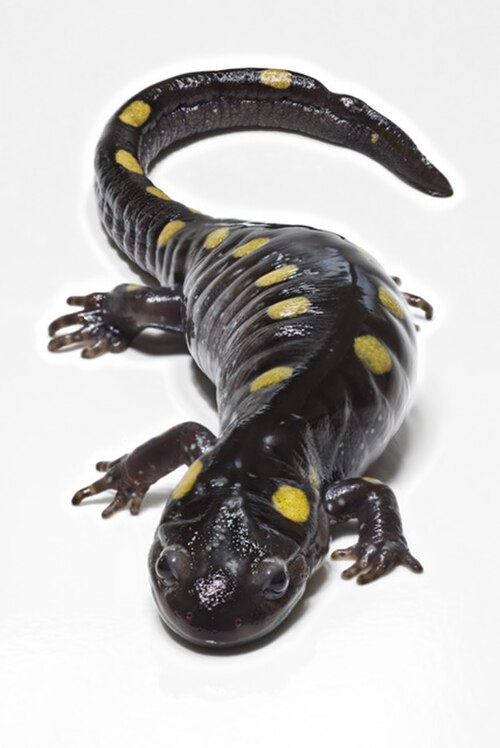Lizardnoun
Any reptile of the order Squamata that is not a snake, usually having four legs, external ear openings, movable eyelids and a long slender body and tail.
Lizardnoun
Lizard skin, the skin of these reptiles.
Lizardnoun
(colloquial) An unctuous person.
Lizardnoun
(colloquial) A coward.
Lizardnoun
(rock paper scissors) A hand forming a "D" shape with the tips of the thumb and index finger touching (a handshape resembling a lizard), that beats paper and Spock and loses to rock and scissors in rock-paper-scissors-lizard-Spock.
Lizardnoun
(in compounds) A person who idly spends time in a specified place, especially a promiscuous female.
Lizardnoun
Any one of the numerous species of reptiles belonging to the order Lacertilia; sometimes, also applied to reptiles of other orders, as the Hatteria.
Lizardnoun
A piece of rope with thimble or block spliced into one or both of the ends.
Lizardnoun
A piece of timber with a forked end, used in dragging a heavy stone, a log, or the like, from a field.
Lizardnoun
relatively long-bodied reptile with usually two pairs of legs and a tapering tail
Lizardnoun
a man who idles about in the lounges of hotels and bars in search of women who would support him
Lizard
Lizards are a widespread group of squamate reptiles, with over 6,000 species, ranging across all continents except Antarctica, as well as most oceanic island chains. The group is paraphyletic as it excludes the snakes and Amphisbaenia; some lizards are more closely related to these two excluded groups than they are to other lizards.
Salamandernoun
A long, slender, chiefly terrestrial amphibian of the order Caudata, superficially resembling a lizard.
Salamandernoun
(mythology) A creature much like a lizard that is resistant to and lives in fire, hence the elemental being of fire.
Salamandernoun
(heraldry) A heraldic representation of the mythological creature, typically accompanied by flames.
Salamandernoun
(cooking) A metal utensil with a flat head which is heated and put over a dish to brown the top.
Salamandernoun
(cooking) A small broiler (North America) or grill (Britain), used in professional cookery primarily for browning.
Salamandernoun
The pouched gopher, Geomys tuza, of the southern United States.
Salamandernoun
A large poker.
Salamandernoun
(metallurgy) Solidified material in a furnace hearth.
Salamanderverb
To use a salamander (cooking utensil) in a cooking process.
Salamandernoun
Any one of numerous species of Urodela, belonging to Salamandra, Amblystoma, Plethodon, and various allied genera, especially those that are more or less terrestrial in their habits.
Salamandernoun
The pouched gopher (Geomys tuza) of the Southern United States.
Salamandernoun
A culinary utensil of metal with a plate or disk which is heated, and held over pastry, etc., to brown it.
Salamandernoun
A large poker.
Salamandernoun
Solidified material in a furnace hearth.
Salamandernoun
any of various typically terrestrial amphibians that resemble lizards and that return to water only to breed
Salamandernoun
reptilian creature supposed to live in fire
Salamandernoun
fire iron consisting of a metal rod with a handle; used to stir a fire
Salamander
Salamanders are a group of amphibians typically characterized by a lizard-like appearance, with slender bodies, blunt snouts, short limbs projecting at right angles to the body, and the presence of a tail in both larvae and adults. All 10 present-day salamander families are grouped together under the order Urodela.
































